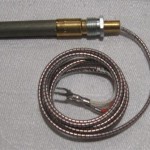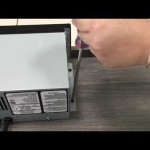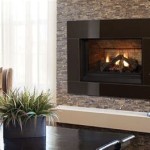How to Build an Outdoor Gas Fireplace
An outdoor gas fireplace provides warmth, ambiance, and a focal point for outdoor living spaces. Constructing one requires careful planning, adherence to safety regulations, and a degree of DIY skill. This article outlines the process of building an outdoor gas fireplace, focusing on key aspects from site preparation to final installation.
Planning and Design
The initial stage involves meticulous planning and design. This includes considering the overall aesthetic, desired size, available space, and local building codes. A thorough understanding of these factors is crucial for a successful and safe project. Ignoring local codes can result in fines or mandated removal of the completed structure. Furthermore, neglecting aesthetic considerations can lead to a finished product that clashes with existing landscaping and architecture. Finally, considering the anticipated use of the fireplace is essential, as it will affect the size, shape, and heat output required.
First, assess the available space. An outdoor gas fireplace needs adequate clearance from flammable materials like fences, trees, and overhanging structures. Refer to local building codes for specific distance requirements. Consider prevailing wind direction to minimize smoke and ash impacting seating areas. Select a location that is easily accessible from the gas line and provides a stable, level surface for the fireplace foundation.
Next, determine the desired size and style of the fireplace. Options range from simple stacked stone designs to more elaborate brick or concrete structures. Choose a style that complements the existing outdoor decor. Draw detailed blueprints or sketches, including precise measurements for all components. This will serve as a roadmap throughout the construction process and help ensure accurate material ordering.
The design should also incorporate a gas line connection point. Consider whether you will be connecting to an existing gas line or needing a new one run to the installation location. Depending on the complexity of this element, consulting a certified plumber or gas technician is highly advisable.
Finally, research local building codes and obtain necessary permits. This often involves submitting your plans for review and inspection. Failure to comply with regulations can result in costly rework or legal issues. Contact your local building department for specific requirements and procedures.
Foundation and Structure Construction
A solid foundation is paramount for the stability and longevity of an outdoor gas fireplace. The type of foundation will depend on the size and weight of the fireplace, as well as local soil conditions. For most residential applications, a concrete slab is a suitable option.
Begin by excavating the area for the foundation. The depth of excavation will depend on local frost line requirements. Generally, a depth of 12 to 24 inches is sufficient in areas with mild winters. Compact the soil at the bottom of the excavation using a plate compactor.
Next, construct a form for the concrete slab using lumber. Ensure the form is level and square. Reinforce the concrete with steel rebar, arranged in a grid pattern. This will add strength and prevent cracking.
Pour concrete into the form, ensuring it fills all voids and is level with the top of the form. Use a concrete vibrator to remove air pockets and consolidate the concrete. Allow the concrete to cure for at least seven days before proceeding with construction.
Once the foundation has cured, begin building the fireplace structure. Select a fire-resistant material such as concrete blocks, brick, or natural stone. Adhere to manufacturer’s instructions for mortar application. Stagger the joints between each layer of material to increase structural integrity. Use a level and plumb bob to ensure walls are straight and vertical.
Create an opening for the firebox. The size of the opening will depend on the dimensions of the gas burner insert. Ensure adequate ventilation around the firebox to prevent overheating. Consider incorporating a decorative lintel or arch above the firebox opening.
Continue building the walls of the fireplace to the desired height. Incorporate decorative elements such as a chimney cap or a stone veneer. Ensure all materials are securely attached and properly sealed to prevent moisture intrusion. Remember that proper ventilation is key for safety, as inadequate ventilation can allow dangerous gases to accumulate.
Gas Line Installation and Firebox Assembly
Gas line installation is a critical step that should only be performed by a qualified professional. Incorrect installation can lead to gas leaks, explosions, and other serious hazards. Even if you are experienced with DIY projects, it is advisable to hire a licensed plumber or gas technician for this work.
The professional will first determine the appropriate size and type of gas line required for the fireplace. This will depend on the BTU rating of the gas burner insert and the distance from the gas meter. They will then run the gas line from the meter to the fireplace location, ensuring it is properly buried and protected from damage.
A shut-off valve must be installed near the fireplace to allow for easy gas supply interruption in case of emergency or maintenance. The professional will also pressure-test the gas line to ensure there are no leaks.
Once the gas line is installed and tested, you can assemble the firebox. This typically involves installing a gas burner insert, which is a pre-fabricated unit designed to safely burn natural gas or propane. Follow the manufacturer’s instructions for installation carefully. Ensure the burner is properly connected to the gas line and that all connections are tight.
The firebox should also include a venting system to exhaust combustion gases. This can be a simple chimney or a more complex venting system, depending on the design of the fireplace. Ensure the venting system meets local building codes and manufacturer’s recommendations.
Finally, install decorative features such as lava rocks, fire glass, or ceramic logs. These elements enhance the aesthetic appeal of the fireplace and help distribute heat evenly. Ensure these materials are specifically designed for use in gas fireplaces. Before the first use, it is wise to consult with the gas line installer to ensure proper operation and safety.
Care must be taken throughout the process to ensure building codes are followed and to protect from potential hazards. Consulting with qualified professionals ensures both the safety and longevity of the structure.

How To Build A Gas Fire Pit Woodlanddirect Com

How To Make An Outdoor Gas Fireplace With Diy Pete

How To Make An Outdoor Gas Fireplace With Diy Pete

How To Build A Modern Outdoor Fireplace Diy Family Handyman

Single Sided Ready To Finish Outdoor Gas Fireplace

How To Build A Gas Fire Pit Woodlanddirect Com

How Do I Build A Diy Fire Pit For Natural Gas Starfire Direct

How To Plan For Building An Outdoor Fireplace

How To Make An Outdoor Gas Fireplace With Diy Pete

How To Build An Outdoor Gas Fireplace Fireplaces Direct Learning Center
Related Posts








